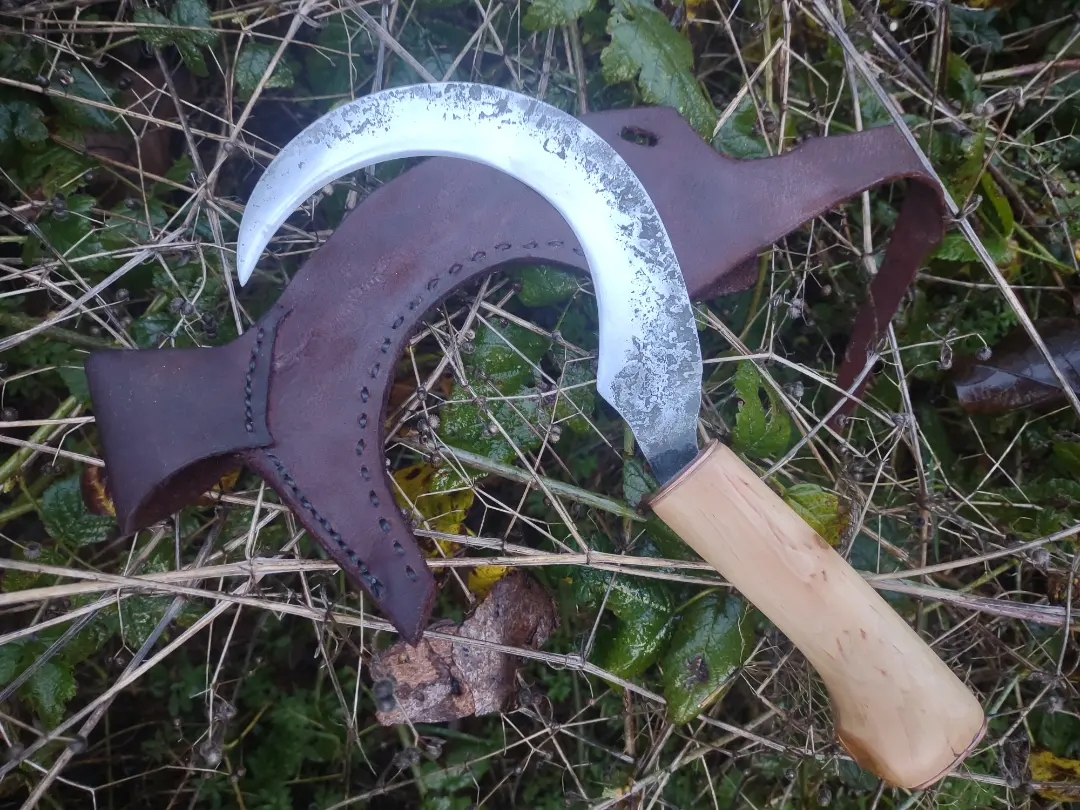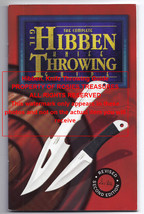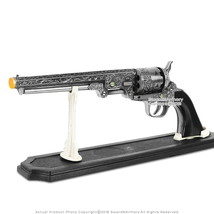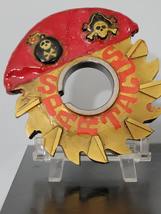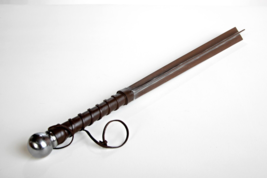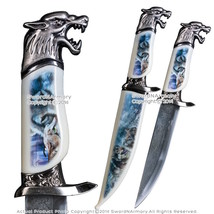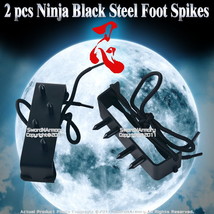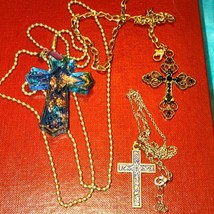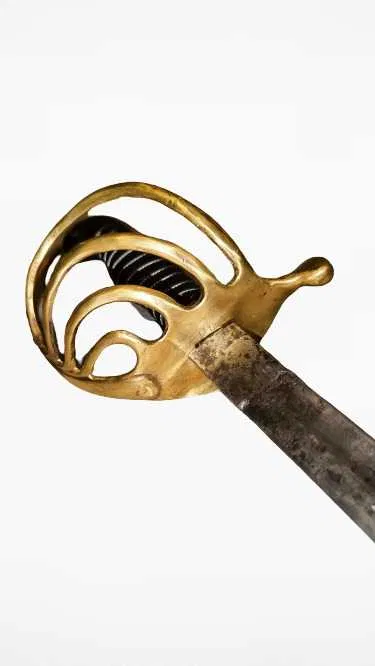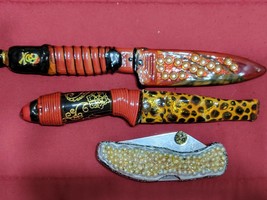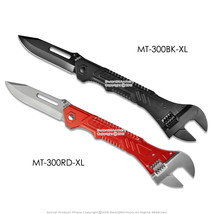Celtic Norse Saxon Damascus Seax Scramsax and 44 similar items
Celtic Norse Saxon Damascus Seax Scramsax 13.75" OA + Encapsulated Carry Sheath
View full item details »
Shipping options
Offer policy
OBO - Seller accepts offers on this item.
Details
Return policy
Refunds available: See booth/item description for details
Purchase protection
Payment options
PayPal accepted
PayPal Credit accepted
Venmo accepted
PayPal, MasterCard, Visa, Discover, and American Express accepted
Maestro accepted
Amazon Pay accepted
Nuvei accepted
View full item details »
Shipping options
Offer policy
OBO - Seller accepts offers on this item.
Details
Return policy
Refunds available: See booth/item description for details
Purchase protection
Payment options
PayPal accepted
PayPal Credit accepted
Venmo accepted
PayPal, MasterCard, Visa, Discover, and American Express accepted
Maestro accepted
Amazon Pay accepted
Nuvei accepted
Item traits
| Category: | |
|---|---|
| Quantity Available: |
5 in stock |
| Condition: |
New |
| Country/Region of Manufacture: |
Pakistan |
| Tang: |
Encapsulated |
| Dexterity: |
Ambidextrous |
| Original/Reproduction: |
Reproduction |
| Blade Material: |
266 Layer 15N20 + 1085 |
| Brand: |
Rite Edge |
| Shipping Weight: |
1 lb, 2 oz |
| UPC: |
801608312997 |
| SKU: |
DM-1299 |
| Handle Material: |
Hardwood |
Listing details
| Seller policies: | |
|---|---|
| Shipping discount: |
Shipping weights of all items added together for savings. |
| Posted for sale: |
More than a week ago |
| Item number: |
1584329057 |
Item description
Celtic Knotwork Triquetra Seax
13.75? Overall, 8.5? Blade, 5.25" Handle
266 Layers, 15N20 + 1085 High Carbon Steels
Encapsulated Carry Leather Scabbard
The seax, also referred to as scramasax or scramsax (literally meaning ?wounding-knife?), sax or seax, was carried by the Saxons and Vikings between the 4th and 10th centuries, came in a wide range of sizes and was used both as a tool and a weapon.
Often carried horizontally, at the back of the belt, the scramasax provided the spearman with both a close-quarters weapon and a tool and utensil in camp. It would provide both slashing and thrusting power in battle while handling heavy-duty chores at sea, around the home and camp.
Amongst the shape and construction of seaxes there's a great deal of variation, see last few photos for examples. The most common characteristics are:
A tang in the centerline of the blade, inserted into an organic hilt of wood or horn.
A large single-edged blade, sheepsfoot profile with sharp straight edge and thick spine.
The blade was worn horizontally inside a scabbard or sheath attached to the belt, usually at the back.
Specifications:
Overall: 13.75? (16.5" in Sheath)
Blade Length: 8.5?, Sharp!
Handle Length: 5.25" Hardwood
Weight: 1 lb, 2 ozs (Seax Sheath Combined)
Thickness at Guard: .2?
Blade Steel: 266 Layer 15N20 + 1085 High Carbon
Oil Quenched, HRC from 52 to 58
Comments: These historically inspired recreations from Rite Edge are beautifully made; strong, solid, and sharp! Technically modern Damascus steel is 'pattern welded' (a technique dating back to 4th C AD Vikings) using modern forges and excellent heat treatment. Hardwood handle is carved with Celtic Triquetra knotwork with brass plated butt cap and guard. I'm a collector and re-enactor, I sell what I own and can personally recommend. See my Seller ratings and buy with confidence, plus I ship fast!
???
Manufacturer's Description:
All our Damascus knives have at least 266 layers during the forging process, with many of them surpassing that mark by several layers.
? Our handles are genuine bone, horn, or stag antler. Some also feature walnut or rosewood handles. We do not use resin to make the handles for any of our Damascus product line.
? We use genuine brass in our bolsters, guards, and inlays. We do not use brass plated steel.
? Our Damascus knives and swords are available with a variety of tangs (i.e. full or encapsulated tangs).
? We currently use two combinations of steel in the forging process of our Damascus blades. Some blades will use a blending of 1074 high carbon steel and WS1 mild steel, while others use a combination of 1085 high carbon steel and 15N20 bright steel.
? All our Damascus blades are Rockwell tested between 52 to 58, or higher. This determines the durability of the blade and its ability to hold a fine edge.
? The Damascus knives, swords, and blanks are subject to an ?acid wash? that helps accentuate the contrast between the types of steel used in the forging of the blades. Because the tang will typically be covered by whatever handle material is used, that part of the blade is generally not subject to the acid treatment. However, the ?swirl pattern? of the contrasting steels that is characteristic of Damascus blades will still be visible when inspected closely.
|
Why are we showing these items?
Search Results
Category "Other"
Country/Region of Manufacture
Country/Region of Manufacture
Brand
Handle Material
Handle Material
Blade Material
Tang
Dexterity
Dexterity
Authenticity
Authenticity
Original/Reproduction
Original/Reproduction
Handmade
Handmade
|

-
Refine your browsing experience
We can show you more items that are exactly like the original item, or we can show you items that are similar in spirit. By default we show you a mix.
This item has been added to your cart
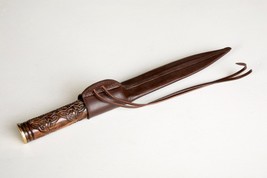 Celtic Norse Saxon Damascus Seax Scramsax 13.75" OA + Encapsulated Carry Sheath added to cart.
5 available in stock
Celtic Norse Saxon Damascus Seax Scramsax 13.75" OA + Encapsulated Carry Sheath added to cart.
5 available in stock
View Cart or continue shopping.
 Please wait while we finish adding this item to your cart.
Please wait while we finish adding this item to your cart.
Get an item reminder
We'll email you a link to your item now and follow up with a single reminder (if you'd like one). That's it! No spam, no hassle.
Already have an account?
Log in and add this item to your wish list.
































